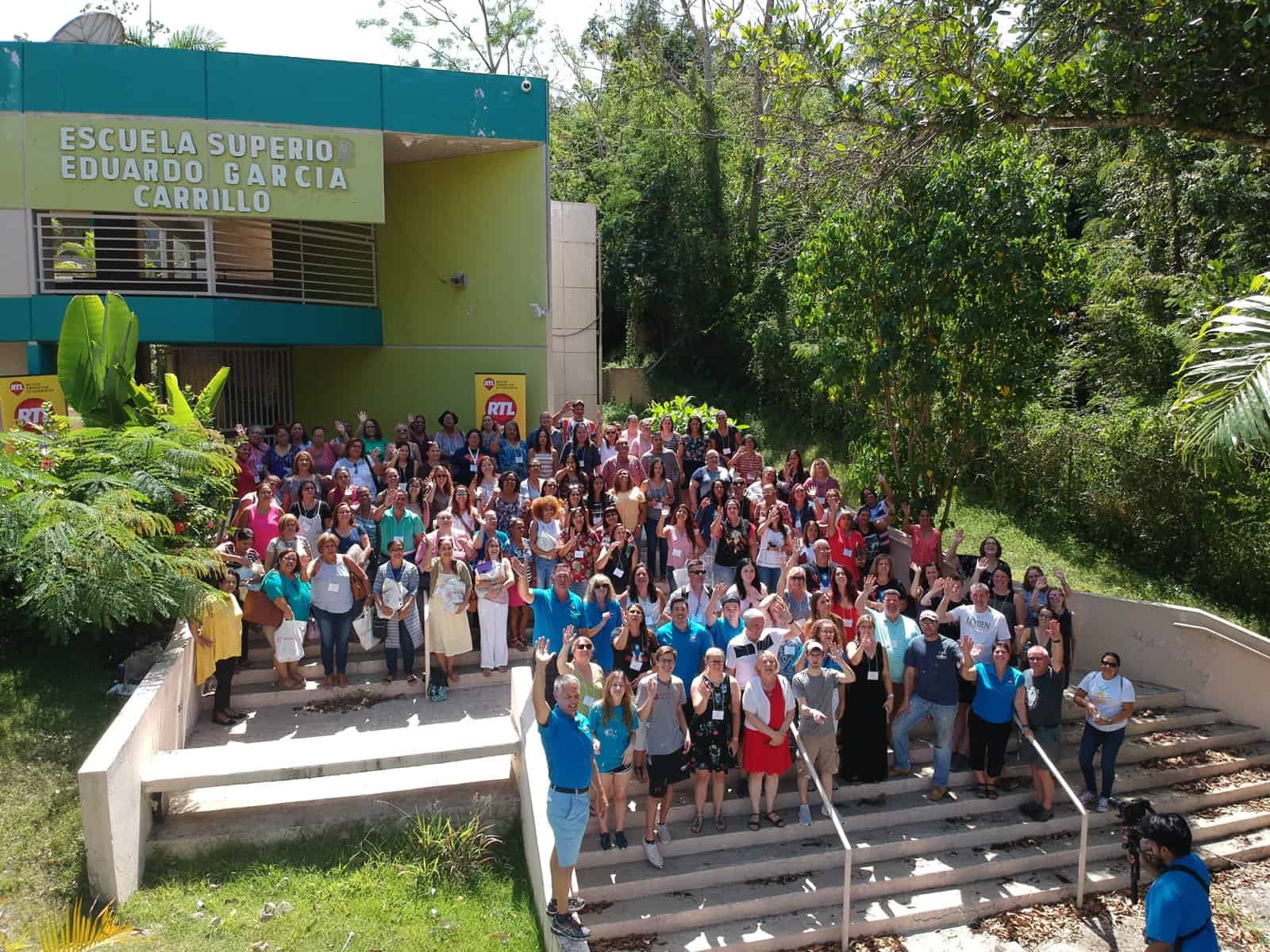The majority of U.S. teens—and many of their parents—are afraid a shooting could happen at their school. A 2019 report by the Society for Human Resource Management found that one out of seven Americans doesn’t feel safe at work—with nearly a quarter reporting experience with workplace violence. And a third of U.S. adults say fear of mass shootings keeps them from visiting certain places and events.
In short, the world feels like a pretty scary place to a substantial portion of Americans. But bad things have always happened in our world—why are we so fearful now?
Here are some critical reasons why, a snapshot of the impact this fear is having and crucial steps communities can take to feel more in charge.
What’s driving the fear? It’s not one thing—it’s many
Our safe places no longer feel safe. We no longer take security for granted, anywhere. Shootings in schools, churches, workplaces and other “soft targets” have escalated in frequency and deaths in the last 20 years. A CBS news report shared this sobering stat: There were more mass shootings than days in 2019.
The global, 24/7 news cycle leaves us nowhere to hide. As most of us found in the thick of the COVID-19 pandemic, it’s easy to be overwhelmed by information and much of it is negative (as always, “bad news sells.”). Even if things aren’t bad in our corner of the world, they’re certainly bad somewhere and our constant awareness creates a sense of impending and lingering doom.
Social media can be a looming, negative presence—and make our kids grow up too quickly. Sure, social media is a great way to stay in touch and disseminate information. But too often these channels are used to provide access to disturbing images, hate speech, fake news and alarmist messages. Think of the messages and images readily available to vulnerable and impressionable kids and teens, and the terrible impact of cyberbullying. And even if digital messages aren’t about violence, they can still have a negative affect—did we see a run on hand sanitizer because Facebook posts dialed up the worry?
We feel less connected and more polarized. More of us live alone. Fewer of us belong to social organizations like churches. And, as we’ve seen in recent election cycles, Americans are more polarized in their beliefs and less willing to consider others’ views. These can contribute to a sense we’re not in this together and don’t have anyone but ourselves to rely on when life feels uncertain.
Together, these elements have negative impacts on communities of all kinds.
Fear keeps communities from focusing on their true missions
It’s nearly impossible to focus on that upcoming AP exam, Bible study or this month’s sales goals if your community doesn’t feel safe. Which means the community will struggle to achieve its true mission (be it education, spiritual connection, meaningful employment and producing a quality product/service or other).
And even creating a plan to take control can have consequences. For instance, communities today spend many hours preparing for the possibility of violence or danger. Compare the amount of time spent during your childhood on a fire or tornado drill, vs. today’s active shooter drills. We’re not saying this preparation isn’t vital—because it is (and more on that in a minute)—but it can also take a toll on community members at all levels, including leaders. Leaders are inundated with information and education about potential threats—and often held accountable if something goes wrong on their watch—but typically receive little instruction or support when it comes to turning that awareness into practical action steps.
Fortunately, there are proactive measures communities can take to tackle their fears.
Tired of living in fear?
4 steps to approach safety with confidence
When do most of us have the highest levels of fear? When we feel out of control and reactive.
The following will put your community on a better path.
1. Recognize there will always be something unpredictable on the horizon. Before the pandemic hit, would you have expected runs on toilet paper and maintaining a six-foot distance in public spaces? You will never be able to predict exactly what will go wrong, but it’s important to acknowledge something will and prepare accordingly.
Here are just a few things that will serve you well regardless of the situation.
- Commit to transparent communication with your community members and take steps to create an empowered environment. In an emergency, things are unlikely to roll out exactly as planned. Community members need to understand the end game and feel they have authority to problem-solve as needed.
- Get to know local resources whose support you’re likely to rely upon in a crisis. For instance, ask first responders to familiarize themselves with your facility and connect with neighborhood leaders, non-profits and houses of worship that might be able to provide support.
- Build confidence and model safe behavior. Safety should become part of your community’s everyday life. Leaders should demonstrate safe behaviors, create and enforce emergency plans and train community members.
2. Invest in proactive risk mitigation and choose the right partner to create and implement your plan. Your budgets in dollars and staff time should reflect your commitment to preparation.
When selecting a partner, look for the following:
- A multi-factor solution. No one element—say better door locks, a great safety drill process or the knowledge of one retired police officer—is going to be the solution. Choose a resource that can deliver a holistic solution, customized to meet your needs, that includes:
- Technology. They should integrate solutions that simplify processes, align with recognized best practices and support your community’s safety culture.
- Education. How will they put knowledge into action? The best resources will have extensive experience with curriculum development and training.
- Services. Look for providers who can offer a multi-layered, holistic program that meets your current needs and can be easily adapted as they change.
The ability to address every step of the safety continuum. The partner you choose should be able to tackle each of the following
- Prevention. Yes, it’s important to effectively manage an unfolding crisis, but it’s even better if you can prevent that crisis in the first place. Did you know, for instance, that experts uncovered 83 missed opportunities that might have prevented Parkland? Look for companies that can deliver comprehensive software and services designed to identify and mitigate risk factors. For example, tools that uncover signs of bullying or depression and a comprehensive analysis of your physical building security.
- Preparation. Ask the company to walk through how they’ll create, implement and help you manage your ongoing safety program. Look for a resource with a well-thought-out methodology that will be customized to meet your needs.
- Response. How will a provider provide the training and tools your community needs to act confidently in an actual emergency? Have their methods been put to the test in real-world situations?
- Recovery. Effective post-trauma healing requires extensive training and support. Ask a prospective provider to walk you through the issues you would likely need to address during this challenging time and the steps they would take to help you do so. For more information on how to help others recover read about our Trauma Response Course.
A reputation for being ahead of the game. Ask prospects to share examples of how they’ve taken proactive steps to enhance their service capabilities (e.g., leveraging outside experts, improving tech capabilities, maintaining or exceeding best practice standards, etc.)
They:
- Expose all community members to the process
- Help fine tune the plan
- Create “muscle memory” to effectively implement the plan in the event of an actual incident.
- Build community confidence. Drills help people feel more secure in their day-to-day lives and will be invaluable if the plan needs to be carried out.
The drills must be age-appropriate—a drill at an elementary school will look very different than a university drill. And it’s vital to recognize the importance of announcing drills ahead of time to ensure a healthy approach to being prepared.
Is your community ready to leave fear behind? NaviGate 360 is here to help. Our modern approach to safety uses rapid innovation and unparalleled expertise to provide the solutions necessary to build safer tomorrows.



